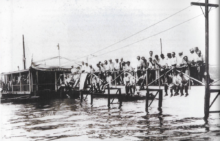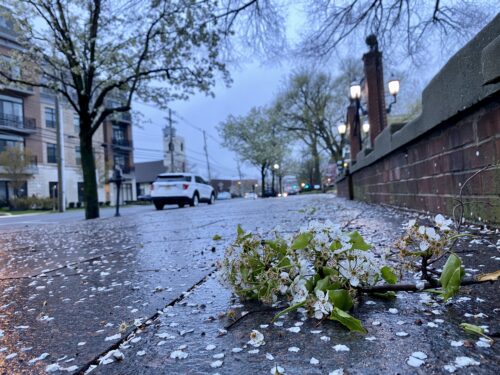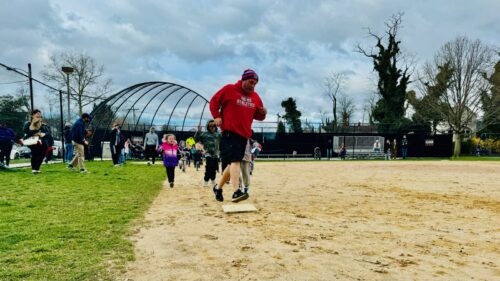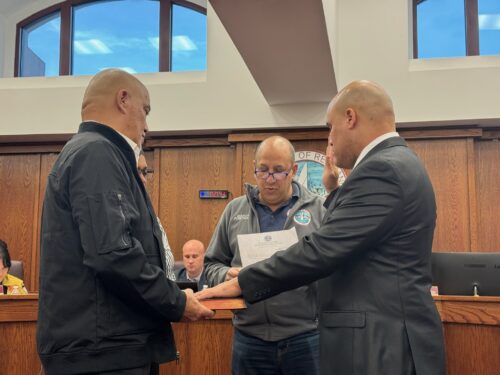
By JOHN T. WARD

But the Shrewsbury River Yacht Club, founded by a bunch of vaudevillians vacationing in Fair Haven more than a century ago, lives on. And now, the successor to the club’s original Navesink River gathering spot is listed on the National Register of Historic Places.


The listing comes nine months after the club was written into the New Jersey Register of Historic Places, the state’s official list of places worthy of preservation. The club was informed of both simultaneously in a July 15 letter from the Department of Environmental Protection’s Natural and Historic Places Preservation Office.
What’s the historic significance? The fact that the organization, then known as the Players Boat Club, was founded in 1910 by traveling actors, singers, comedians and acrobats who, for unknown reasons, started using a tiny waterfront village as a summer getaway in the 1890s, Lockwood told redbankgreen on a tour of the facility.
“They built this before there was a town called Fair Haven,” said Lockwood, noting that the borough wasn’t formally carved out of Shrewsbury Township until 1912.
As recounted in a lengthy and somewhat apocryphal 1932 Asbury Park Evening Press feature story, a group of some 75 thespians summering in the area of Doughty Lane and River Road decided in June, 1910, to buy a houseboat as a gathering place.
They found one just up the road, in Red Bank, available for $250.
Tight on funds, the players did what came naturally to drum up the needed scratch: they put on a show, at Keith’s Lyceum (formerly the Frick) in Red Bank, now the site of the abandoned red clay tennis courts in Marine Park, according “100 Years on the Navesink,” a club history written by local historian Randall Gabrielan for the organization’s centenary.
The show, billed as a “Monster Vaudeville, Comedy and Opera Performance,” raised the money needed to buy the houseboat, which was towed to Fair Haven, and the Players Boat Club inaugurated the vessel on July 4, 1910, with an all-male membership.
Though a few women – including performer and future borough sheriff Annie Hart – had ties to the the club that would make them charter members in all but title, they could not be full-fledged members until well into the 198os, said Lockwood, a longtime borough resident who served as club commodore in 2007 and now lives in Atlantic Highlands.
In addition to men, “membership was strictly limited to theatrical folk, and the greats of the era were members and frequent visitors,” a capsule history on the club website states. Among the “occasional guests” were Al Jolson, Eddie Cantor, and Jack Norworth, who co-wrote the song ‘Take Me Out to the Ball Game,’ even though he’d never been to one.
But by the 1930s, radio and talkies had given vaudeville the hook, and with members dying off, the club was opened to “lay people.” In 1938, the club reorganized as the Shrewsbury River Yacht Club. (What we now call the Navesink was known as both the Navesink and the North Shrewsbury until 1939, when the river’s current name was made official, Gabrielan writes.)
Gabrielan’s book was among the voluminous submissions required to earn the historic designations, said Lockwood, who spearheaded the effort with another former commodore, Ron Subarsky.
Structurally, nothing remains of the original clubhouse, which was quickly outgrown and replaced by another houseboat, purchased for $2,500 and hauled in from Coney Island. That one was badly damaged in a storm, and in July, 1929, was replaced by the current fixed structure, erected on pilings over the river, according to Lockwood.
The first floor of the building, which had accumulated three layers of interior paneling, had to be ripped out and replaced after river water inundated it during Hurricane Sandy in October, 2012. But the exterior cladding and windows that had been installed for the centennial withstood the battering.
Today, aside from a few artifacts, little remains of the Players Club, and even less of its bawdy spirit. Instead, a genteel, air-conditioned vibe prevails. Wooden walls gleam around the perimeter of an old-school dance floor. Retirees play canasta in the afternoon, or gather for cocktails to watch the sun set over a vista no postcard could capture. Bulging yachts, some of them with summer-long residents, tie up at the dock, where once were modest fishing vessels.
With membership capped at 125 families, “people don’t even know we’re here,” Lockwood said. The dual historic designations are not likely to change that.
“It’s actually not the building itself, but who started it,” Lockwood said. “It’s so unique that, here in New Jersey, you would have a boat club of vaudevillians.”





















